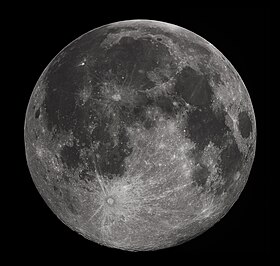^ And who says science isn't cool ^
When our lovely solar system was just beginning to form, the Sun was sorrounded by a bunch of asteroids, dust, and protoplanets. Protoplanets are baby planets, who develop some sort of core after creation and usually collide with eachother to form the wonderful planets we know today. Unless its a gas giant which is just a whole bunch of weird that I am not going to get into today.
So when our Earth was young, but was just about fully formed after swallowing a healthy diet of protoplanets, a new protoplanet about the size of Mars named Theia essentially barreled into it. Theia, like Earth, had a molten iron core. When they collided, most of the planets became molten, and Theia's core became part of Earth's core. A large chuck of Earth and Theia's mantles were ejected out into space, where they eventually formed an orbit of debris around the Earth. These chunks of debris eventually collided together to form the lovely Moon we know today.
Now of course the moon did not just hit earth head on, because well, when a planet the size of Mars hits a planet of a simular size, neither survive after the explosion of molten chaos. The moon hit the Earth at an angle around 45°, not too much so that Earth was destroyed, but just enough so that we do not have a lopsided planet named Theia orbiting around the sun still.
The one problem with this theory is that a collison of this magnitude would have to have caused Earth to essentially liquify, meaning that the entire crust was a post apocalypitic sea of magma. However, scientists have yet to find evidence of a sea of magma like this existing.
Fun Fact: Theia is named after a Greek Titan who gave birth to the Moon goddess, Selene. Which is awesome because the protoplanet did become the Moon. lol astronomers, you so clever.
Here's the Moon, looking all smug. It knows it could have destroyed Earth...I don't trust it. -.-
Enjoy this excellent NASA video on the evolution of the moon's surface

No comments:
Post a Comment